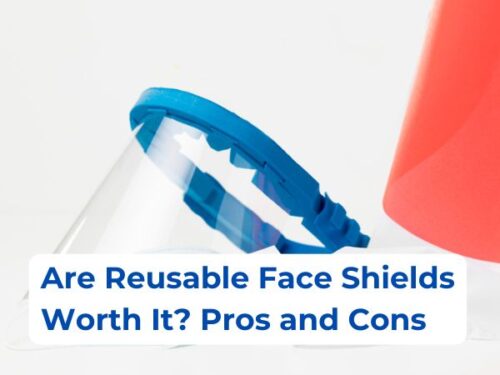Most medical devices you see in laboratories are used in healthcare situations. To perform tests on patients, for instance, doctors and nurses utilize tubes to collect blood samples from them. Since they assure everyone’s health and safety, hospitals have increased their usage of disposable vacuum blood collection tubes and transport tubes. Doctors and nurses can maintain high hygiene while using these blood collection tubes, which is why they are frequently selected.
Blood collection tubes are used for a wide range of clinical pathology tests. In the blood work lab, blood collection tubes are used for hematology, serum chemistry, electrolytes, blood gas measurement, specimens for microbiological studies, and many others. They come in various sizes, shapes, and designs. Laboratory staff needs to understand the properties of each type. Furthermore, each tube should be properly labeled so that it can be handled easily and clearly identified without having to open it repeatedly.
The Concept of Vacutainer Tubes
A tiny rubber covering on the inside end of the Vacutainer needle prevents blood from leaking out. This occurs if the Vacutainer tubes are changed during a multi-draw of a blood sample for a package or multiple investigations for different departments at a pathology lab. The outer end is inserted into a vein. When the needle is screwed in, the coated end is contained within the clear plastic needle holder.
The inner needle pierces the rubber cap when a tube is placed into the holder. The vacuum draws blood through the needle and into the tube. After extracting the full tube, insert another and fill it similarly. The amount of blood that flows into the tube is determined by the amount of air blasted out of it.
Benefits of Vacuum Blood Tubes
Have you ever wondered what the benefits of popular vacuum blood tubes are? Here, we have created a list of some advantages of these tubes:
-
Blood Collection Tubes Save Time and Speed
Suction syringes are needed to provide negative pressure to draw out the blood when disposable syringes are used to collect blood samples. This process is time-consuming and labor-intensive, but it also causes more medical waste. Saving time, vacuum blood collection tubes can also be used for multiple-tube blood collection without suction.
Some patients may be able to avoid the discomfort of a second venipuncture, reduce the risk of errors and repeat testing, and decrease the financial burden placed on the child by having their blood directly connected to an infusion set that drips the liquid of the day after it has been carefully collected.
-
Blood Collection Tubes Prevent Infection by Limiting Contact
The majority of patients are admitted with infectious disorders. Because they work with blood samples all day, nurses are the most likely to contract deadly infections. These infections can rapidly spread if the blood sample is not handled with all the appropriate care.
Nurses and hospital workers use blood collection tubes and test patients without touching the blood. This is a result of the vacuum tubes’ mostly closed condition. The bd vacutainers are created using glass or plastic and low pressure. These tubes are lightweight and non-friable. Each of these elements helps to keep the nursing personnel safe.
-
Find a More Accurate Scale
Having accurate scales in the blood tubes is critical since the findings might fluctuate when agents and other drugs are introduced. Fine scales are included with the vacuum blood collection tubes. Because different testing physical examination items add different drugs to the blood, disposable vacuum blood collection tubes often have very fine scales during the production process, so when the vacuum blood collection tubes have accurate scales, they can also make The staff more accurate in the process of adding the agent.
-
Prevent Contamination of Patient Blood Samples
The vacuum inside the disposable vacuum blood collection tube, as long as the patient’s blood is pumped into the blood collection tube, will not be exposed to outside air, plus the efficient disposable vacuum blood collection tube itself is sterilized by high temperature, so when The nurse is collecting the patient’s blood into the device for analysis, it will not be contaminated by external substances, which also promotes the accuracy of the test results.
Conclusion
In conclusion, these advantages may be gained by employing disposable vacuum blood collection tubes. The first is that using blood collection tubes prevents employees from coming into touch with the source of illness carried by the patient, as well as preventing the patient’s blood sample from being contaminated by some external substances, hence increasing the reliability of the test findings. In addition, the one-time vacuum blood collection tube has a fine scale index and may be more precise when taking medicine.
If you are looking for high-quality blood collection tubes, visit Health Supply 770.
FAQs:
What is the purpose of the vacuum in evacuated tubes?
The purpose of the vacuum is to remove gas molecules from the evacuated tube. This is necessary to stabilize and lengthen the life of the blood.
What is the efficiency of vacuum tube collectors?
The efficiency of vacuum tube collectors depends on the ability of the collector to reject heat passively by convection. Hot and cold gases from the tubes flow side by side and heat the main runners by conduction. Since the hot gas has a larger mass, the runners are heated faster. The gas velocity is low, and the heat transfer is by conduction. When the gas velocity is high, the heat transfer is by convection. The gas velocity is higher, and the heat transfer is by radiation.
In which collector is the efficiency maximum?
In testing, the Absolicon solar collector had an efficiency of 76.4%. This is the highest value ever obtained for a small parabolic trough.
Do vacuum tubes generate heat?
Yes, vacuum tubes do generate heat. The heated gases inside the tube are dangerous, so the tube must be enclosed in a sealed enclosure.
What is a vacuum tube made of?
A vacutainer blood collection tube is a sterile glass or plastic test tube with a colored rubber stopper that creates a vacuum seal inside the tube, allowing a specified volume of liquid to be drawn.

PhD Scholar (Pharmaceutics), MPhil (Pharmaceutics), Pharm D, B. Sc.
Uzma Zafar is a dedicated and highly motivated pharmaceutical professional currently pursuing her PhD in Pharmaceutics at the Punjab University College of Pharmacy, University of the Punjab. With a comprehensive academic and research background, Uzma has consistently excelled in her studies, securing first division throughout her educational journey.
Uzma’s passion for the pharmaceutical field is evident from her active engagement during her Doctor of Pharmacy (Pharm.D) program, where she not only mastered industrial techniques and clinical case studies but also delved into marketing strategies and management skills.

















